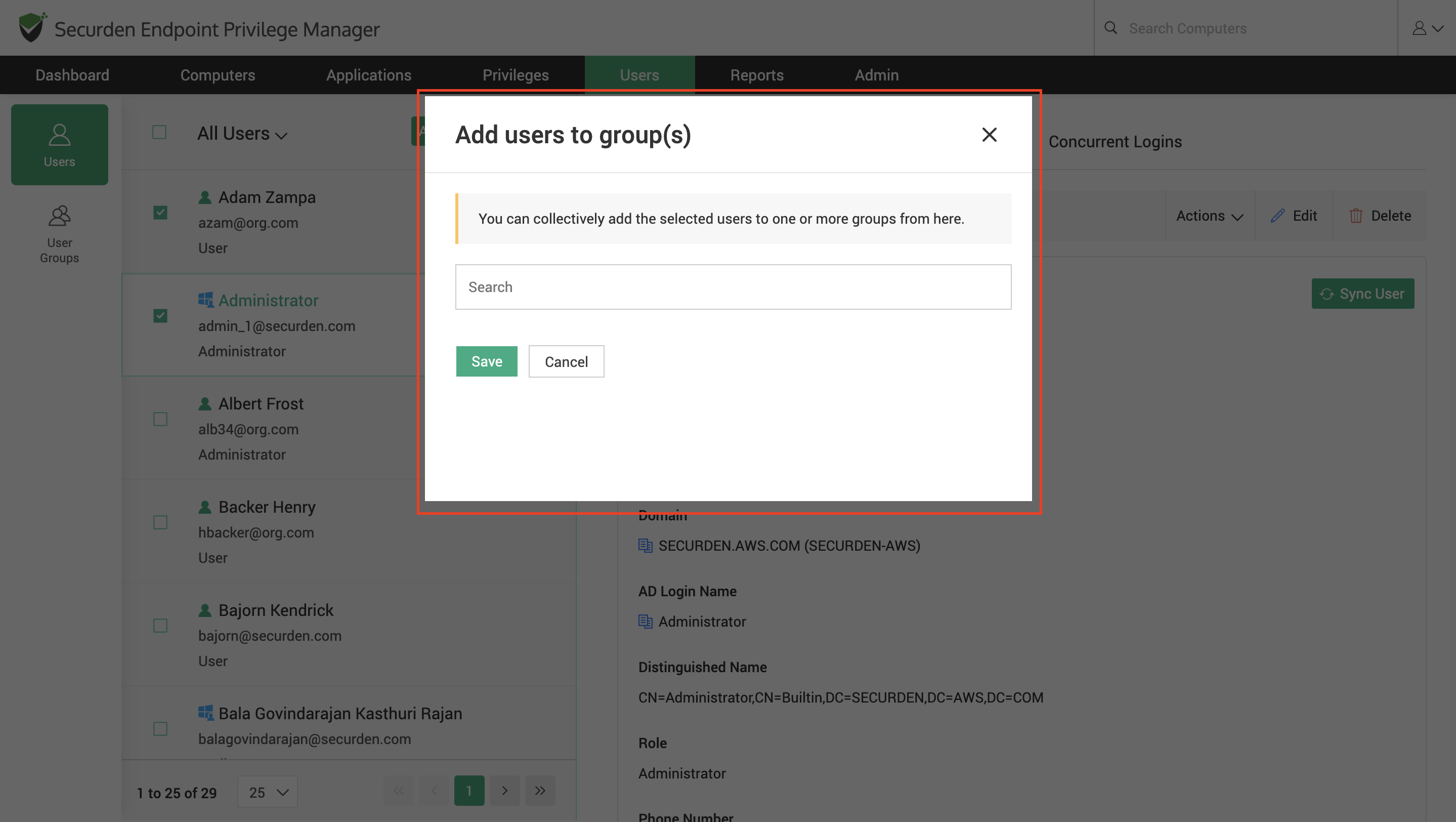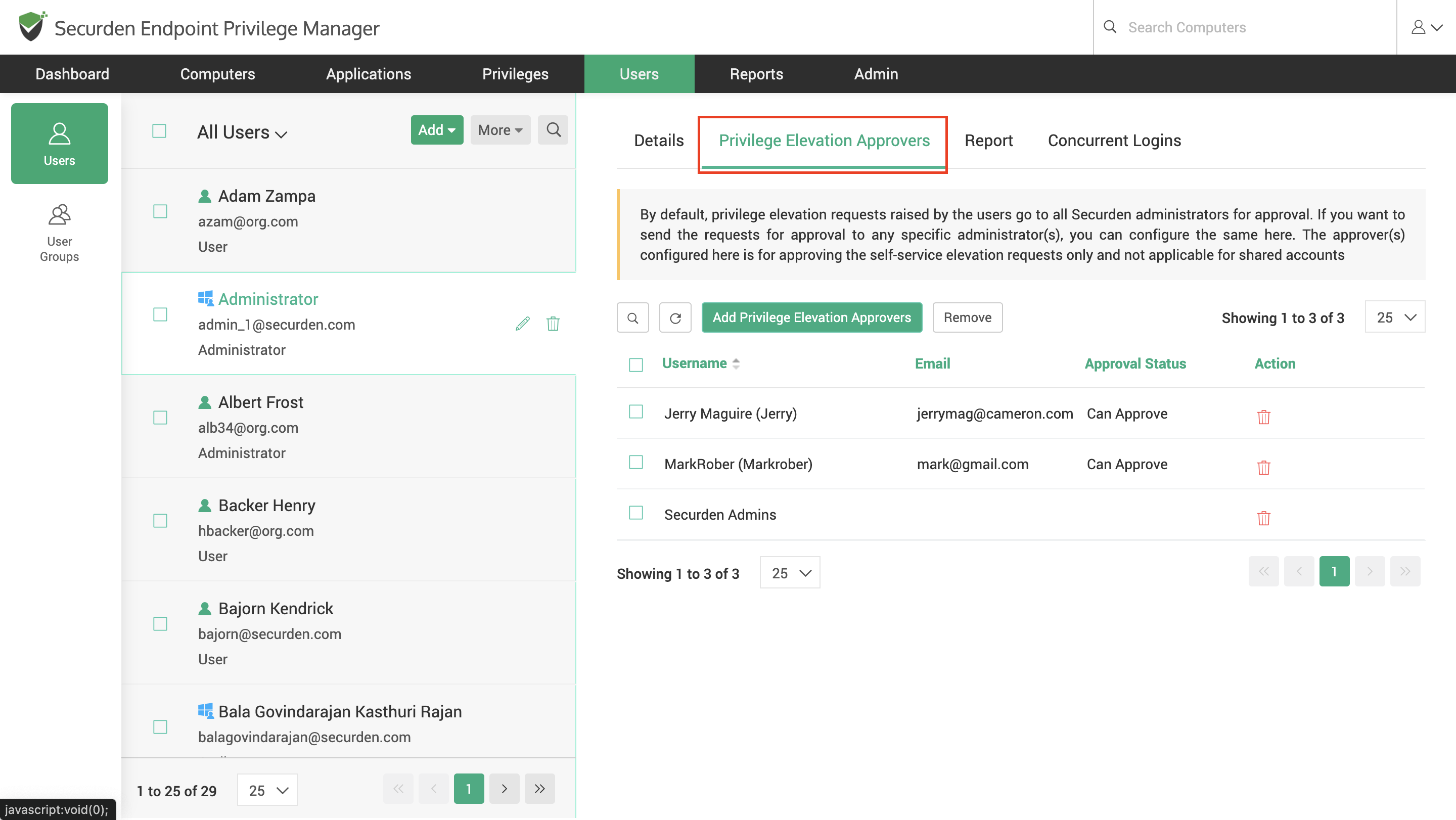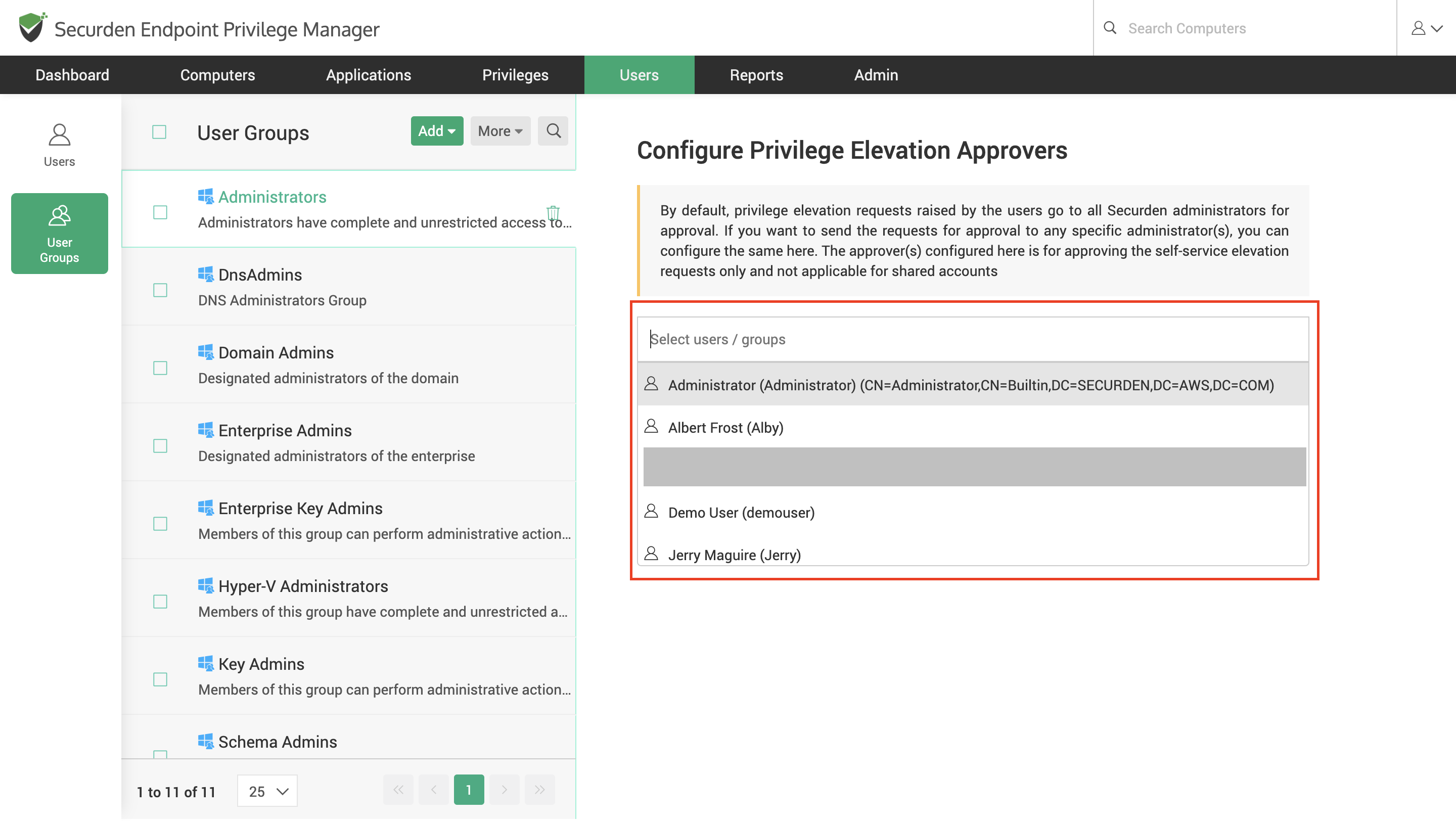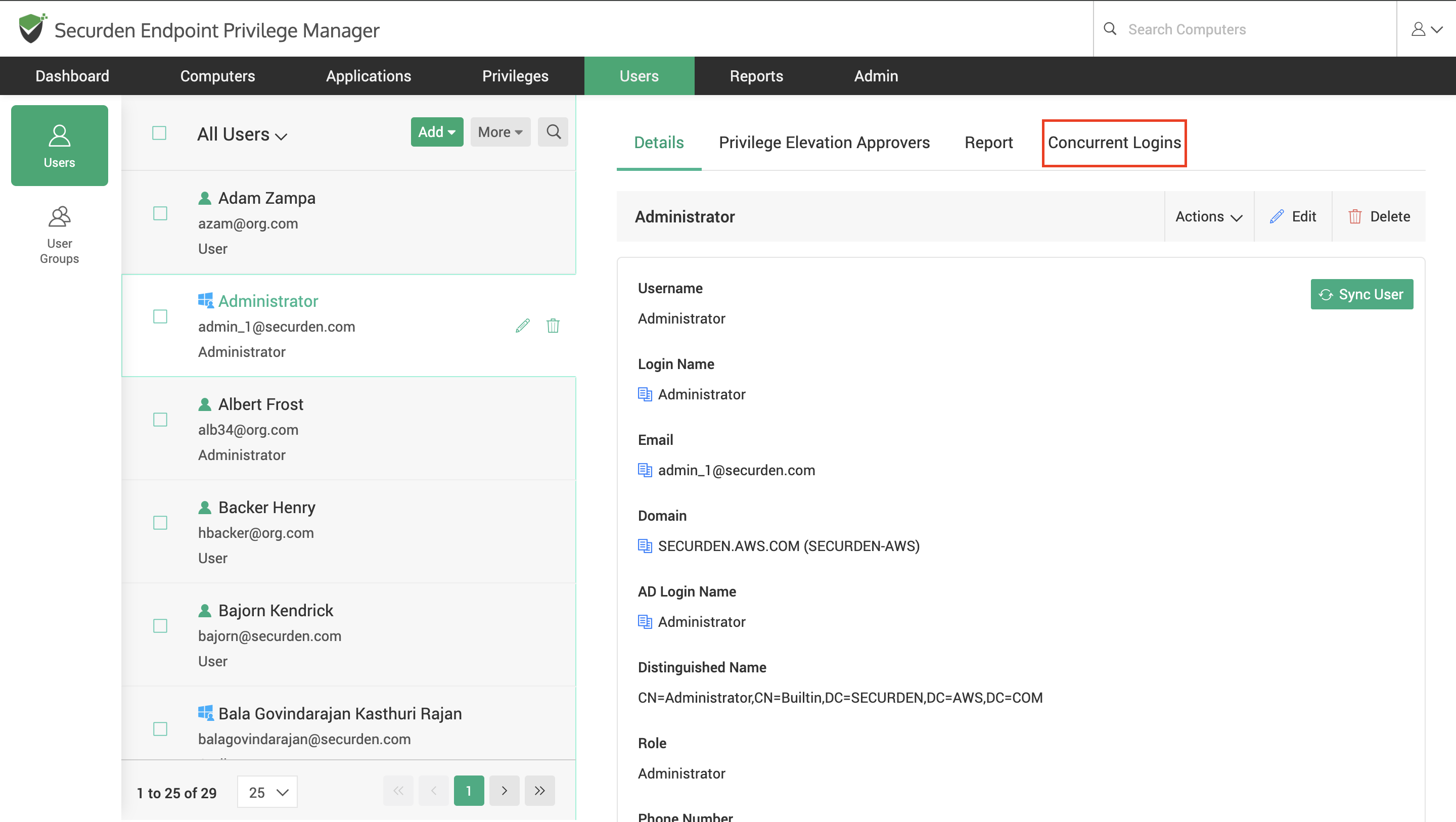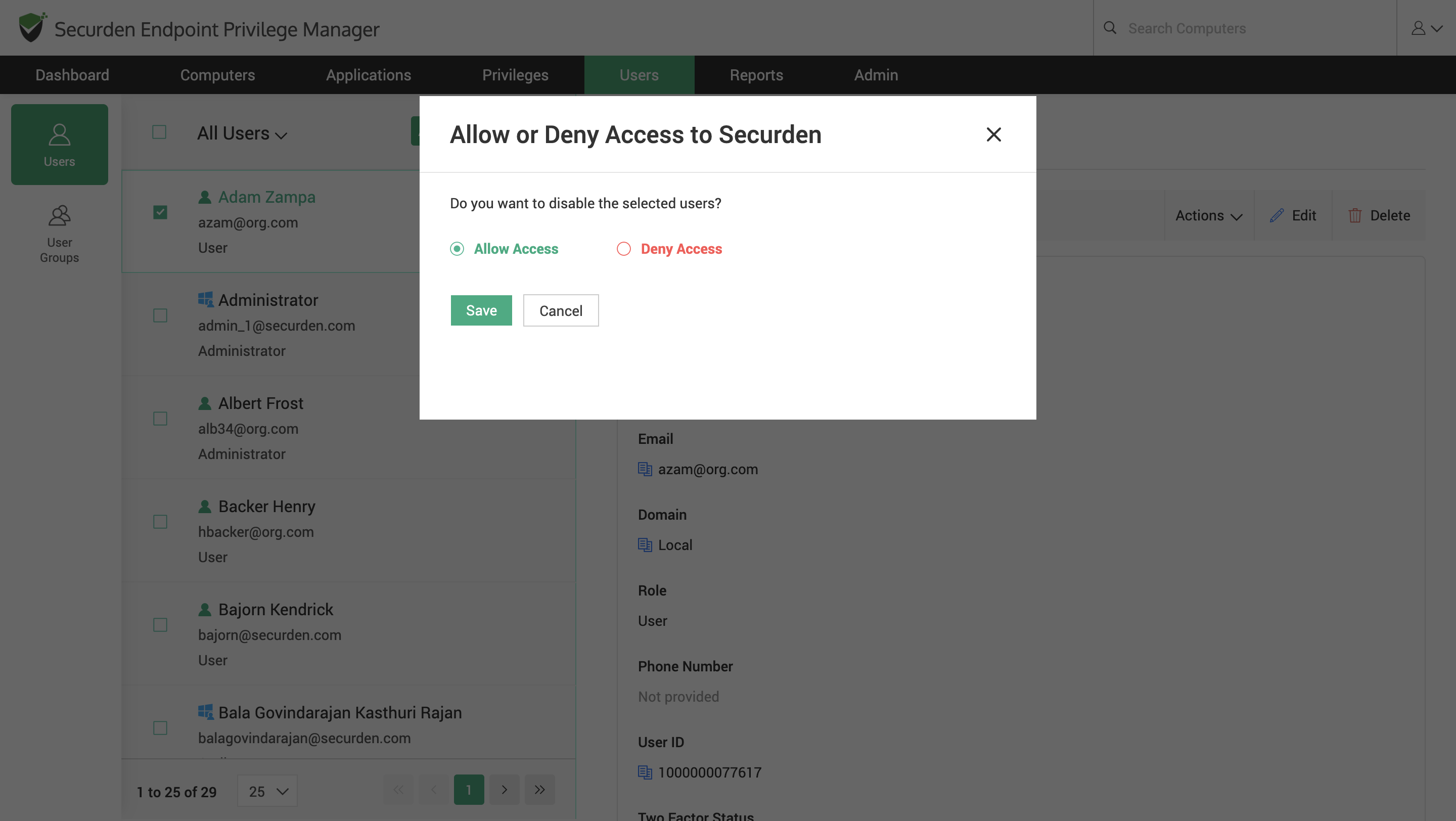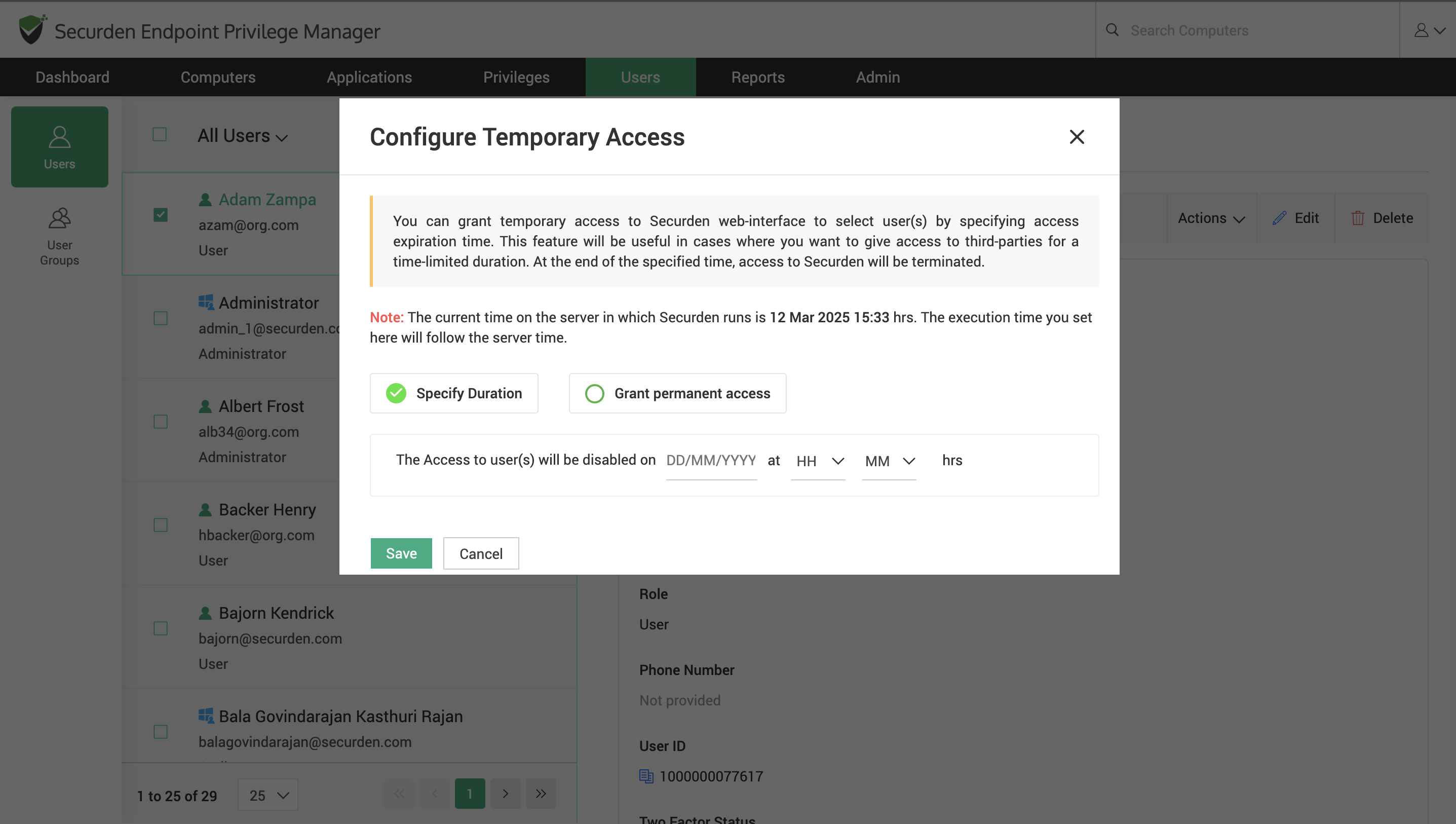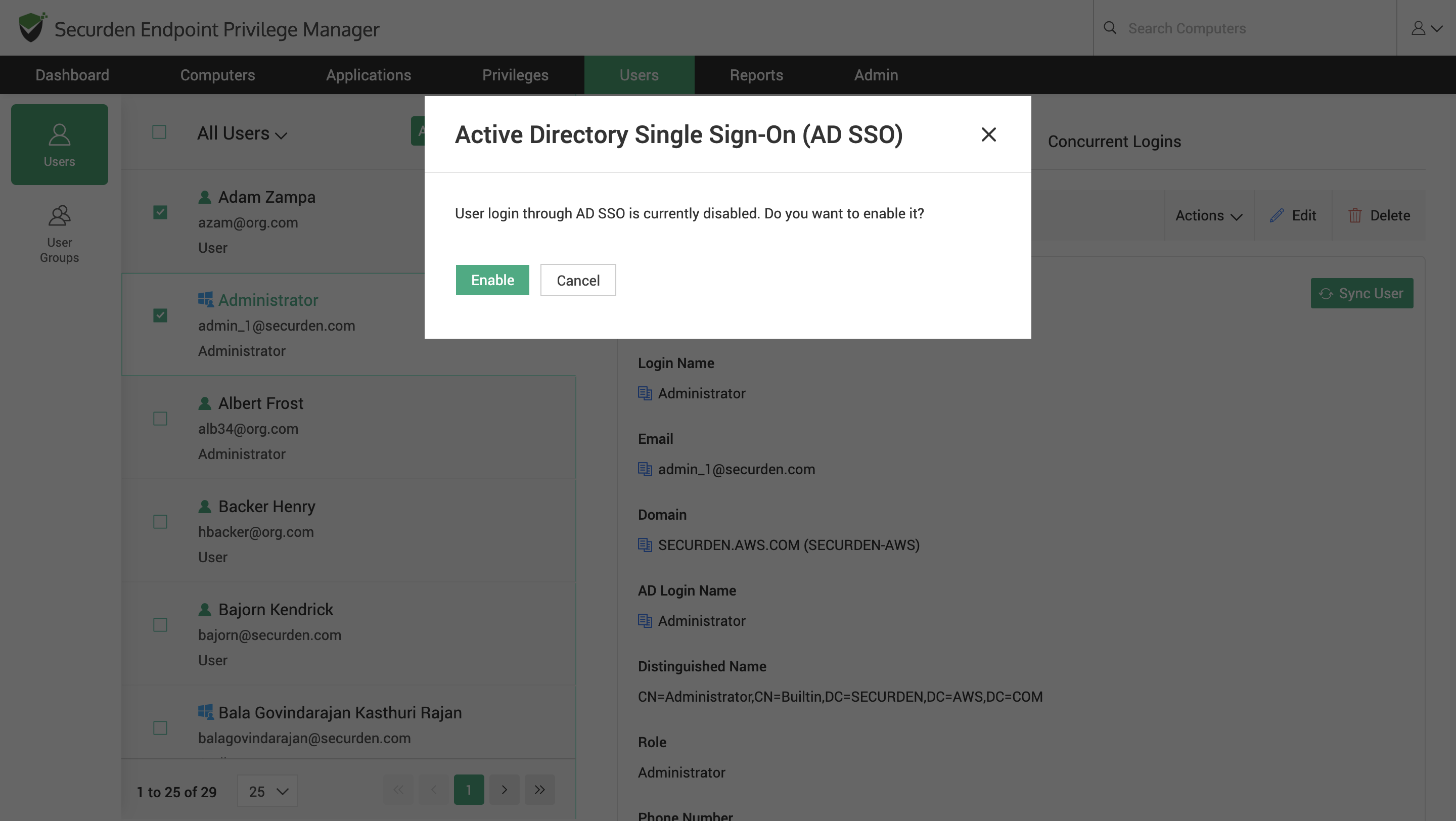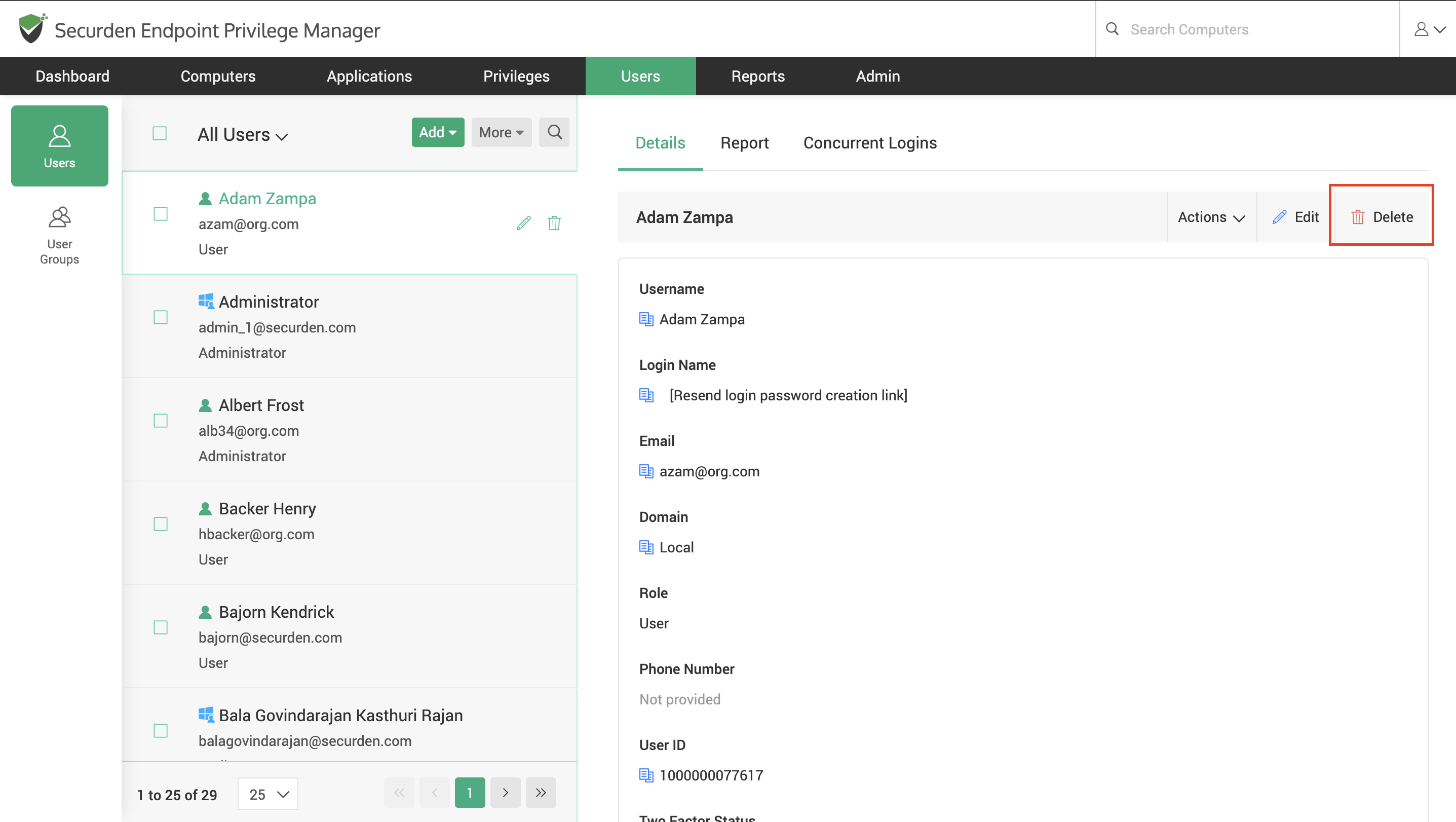What are the User Management Provisions Available in Securden EPM?¶
Securden EPM has different provisions to solve various user management challenges such as difficulty in organizing users, controlling access to the web interface to regulate server load, unsynchronized domain user list, orphaned idle user accounts, etc.
How to Organize Users¶
You can add users to existing user groups directly from the users tab. To add users to a user group, navigate to the Users tab, select the required users and go to More >> Add Users to Groups. In this window, you can search for user groups to which the selected users must be added.
How to Designate Approvers for Users?¶
Securden allows you to designate specific approvers for individual users and user groups. Once configured, the requests raised by the users will be directed to the designated approver.
To assign approvers for users, navigate to the Privilege Elevation Approvers on the Users section.
To assign approvers for user groups, navigate to the Privilege Elevation Approvers on the Users >> User Groups section.
In this page, click on Add Privilege Elevation Approvers to add a designated approver for the user/user group.
You can select the user or user group, whose members will manage the requests raised by the user/user group.
Once the selections are made, click Save.
How to Terminate Concurrent User Sessions?¶
As an administrator, you have the control over concurrent web interface sessions. If a user has logged in to the web application from multiple devices or browsers, the administrator can terminate the concurrent sessions by navigating to Users >> Concurrent Sessions.
How to Export User/User Group Specific Reports?¶
Securden EPM generates various reports that you can make use of to create application control policies and for compliance purposes. You can find user and user group-specific reports of each user/user group on the right-hand side window in Users >> Users/User Groups.
While the user specific report provides insights into user activity, their privilege elevation history, and their designated approvers, the group specific reports provide insights into the group members, their user activities, designated approvers for the group, and privilege elevation activities.
How to Control Application Access?¶
Securden EPM is designed in a way such that, the users might not ever need to access the web interface. The scope of activities for end users on the web interface is very limited. It is advised to deny access to the web interface to keep the load on the EPM server minimal.
Navigate to the Users section and select all the required users. Go to More >> Control Application Access.
To control application access to a particular user, you can also use the Actions button of the user.
Here, you can choose to allow or deny access to the web interface for the selected users.
How to Configure Temporary Access to the EPM Web Application?¶
In rare scenarios, certain end users might need to access the EPM web interface. They might need to place a request for application access or privilege elevation on a different endpoint than theirs.
To allow users to place such requests, you can make use of the temporary access provision in Securden EPM.
To configure temporary access to the web interface, navigate to Users section, select the required users, and go to More >> Configure Temporary Access.
You can configure temporary access to individual users by using the Actions dropdown menu as well.
In the GUI that opens, you have the option to specify the duration of interface access or grant access to the interface permanently.
How to Enable and Disable AD SSO for Users¶
You can choose whether to allow or deny domain users the permission to use AD SSO to login to Securden EPM. In the Users section, select the required users and go to More >> Enable/Disable AD SSO.
Here you can choose to enable or disable AD SSO for the selected users.
How to Enable/Disable RADIUS Authentication?¶
You can select users and choose whether to allow these users to use RADIUS based two factor authentication. In the Users section, select the users and navigate to More >> Enable/Disable RADIUS Authentication.
How to Edit User Attributes?¶
Once a user is added to the Securden directory, you have the option to change the user attributes as you wish. Navigate to the Users section and click on Edit to change the user attributes.
How to Delete Users?¶
You can delete users added to Securden. When a domain user is deleted in Securden, the change will not be reflected in your AD or Azure AD. However, when a user is deleted in your AD or Azure AD, then the user will be disabled in Securden. Disabled users cannot login to the interface.
To delete a user from Securden repository, navigate to Users section, select the required user, and click Delete.
You can select multiple users from the Users section and navigate to More >> Delete Users to delete multiple users at once.
